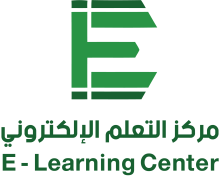What is blended learning:
It is learning in which both traditional learning and e-learning are used within certain percentages in the teaching and learning process according to the requirements of the educational situation, with the aim of improving the achievement of educational goals at the lowest possible cost.
Blended Learning Features
1. Reducing learning expenses.
2. Increasing the interaction between the student and the trainer, between the students themselves, and between the students and the content.
3. Moving from group learning to student-centered learning.
4. Enrich the learner's experience and learning outcomes.
5. Take advantage of modern technological means in design, implementation and use.
6. Enhancing the human aspects and social relations between the learners and between them and the teachers as well.
7. Flexibility in meeting the individual needs and learning styles of learners at different levels, ages and times.
8. Raising the quality of the educational process.
Evaluation in blended learning:
Jean-Marie Ducatel defines evaluation as the process of collecting information as accurate as possible and as comprehensive as possible, followed by the analysis of this information in order to make a decision or judgment. Evaluation requires placing the learner in a certain position to ensure that learning is taking place, and thus measuring it from a measurement network consisting of a set of predetermined learning elements that show performance.
The following is a design for the blended learning and e-learning evaluation, according to Bloom's scale, in addition to including it on possible evaluation activities and criteria that will help judge the quality of the learner's performance.
Designing an evaluation for blended learning and e-learning | ||
|---|---|---|
| Classification of teaching, learning and evaluation | Possible evaluation activities. How will students demonstrate what they know and can do? | Criteria for grading and feedback. How will you judge the quality of what students know and can do? |
| 1. Remembering | Multiple choice questions | Fill in the blanks |
| 2. Understanding | Suggested questions An example of an idea or concept traditional math problems The discussion forum or any work or report allows the following instructions: sum up... Put your own words... Row..... | Checklist answer keys List of accepted answers |
| 3. Applying | Applying a predetermined process that results in a non-genuine solution/product: Repetition of a scientific experiment. math problems redesigning The discussion forum or any work or report allows the following questions: What approach will you use? How can you use this solution? What would happen if...? | Checklist to walk by. Checklist for the final answer. List of accepted answers. |
| 4. Analyzing | Concept Map The discussion forum or any work or report allows the following questions: What conclusions did you reach...? What is the matter ...? | List of accepted answers. List of unacceptable answers. Prerequisites for an answer. |
| 5. Evaluation | self evaluation Peer evaluation movie review Selection and rationalization of resources The discussion forum or any work or report allows the following questions: How do you set a priority...? What is your opinion...? Do you agree to...? Why can you...? | Checklist Standards set by the teacher Peer assessment criteria |
| 6. Creating | personal wallet An innovative solution to a real problem Innovative product design creative artwork Innovative story Offer Develop a new mechanism: for writing for manufacturing to collect data for games for artistic expression | Checklist Standards set by the teacher Peer assessment criteria |



